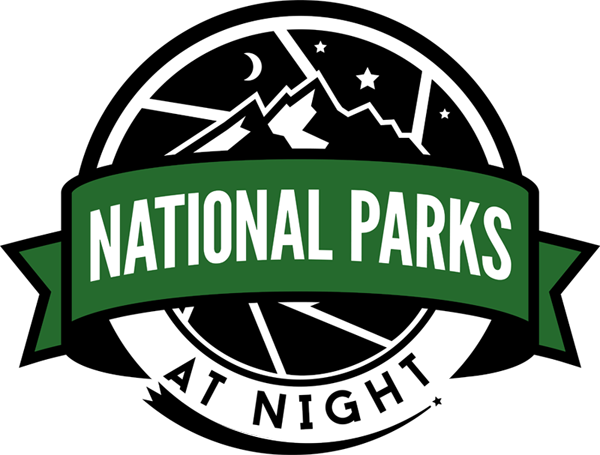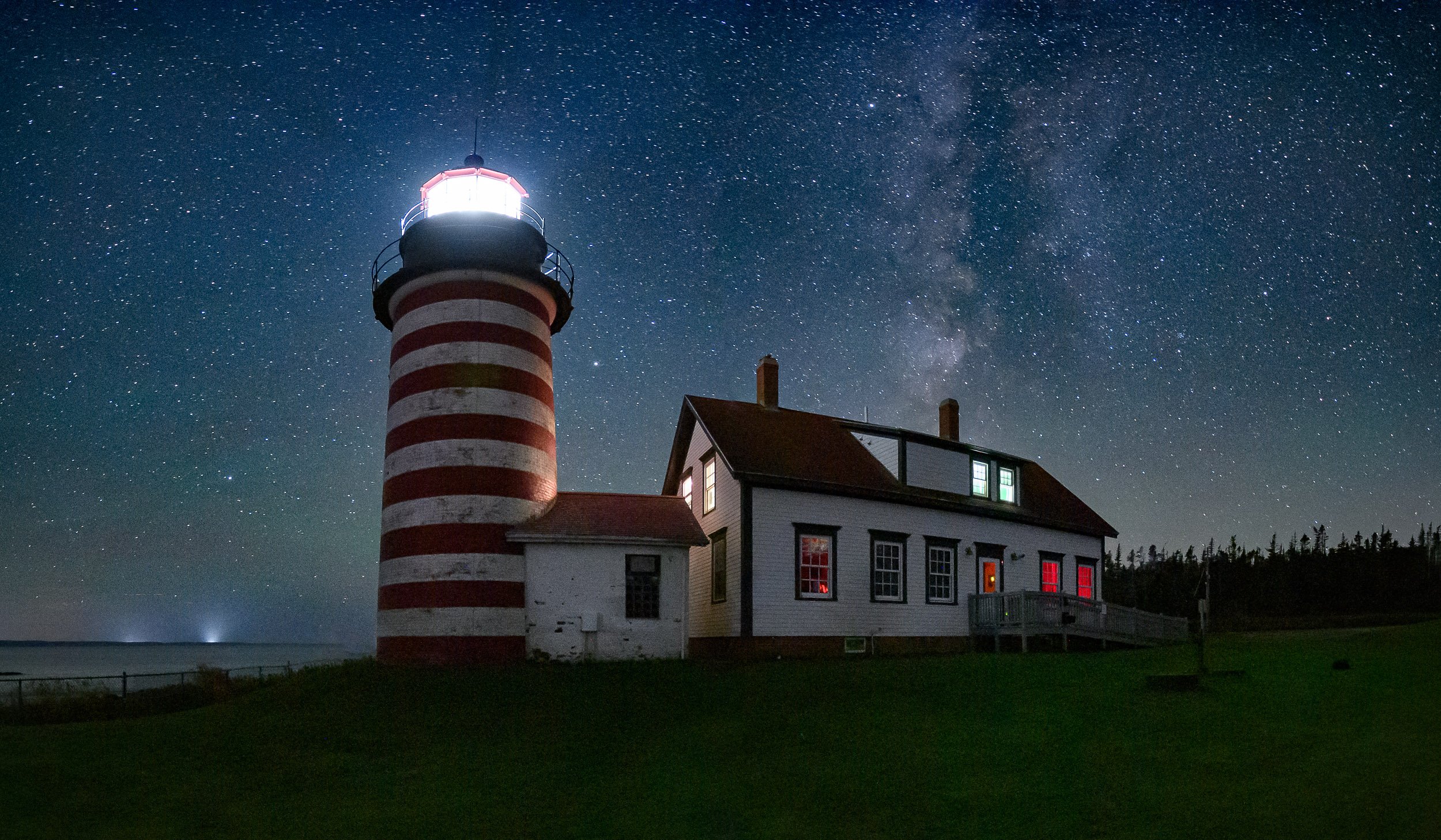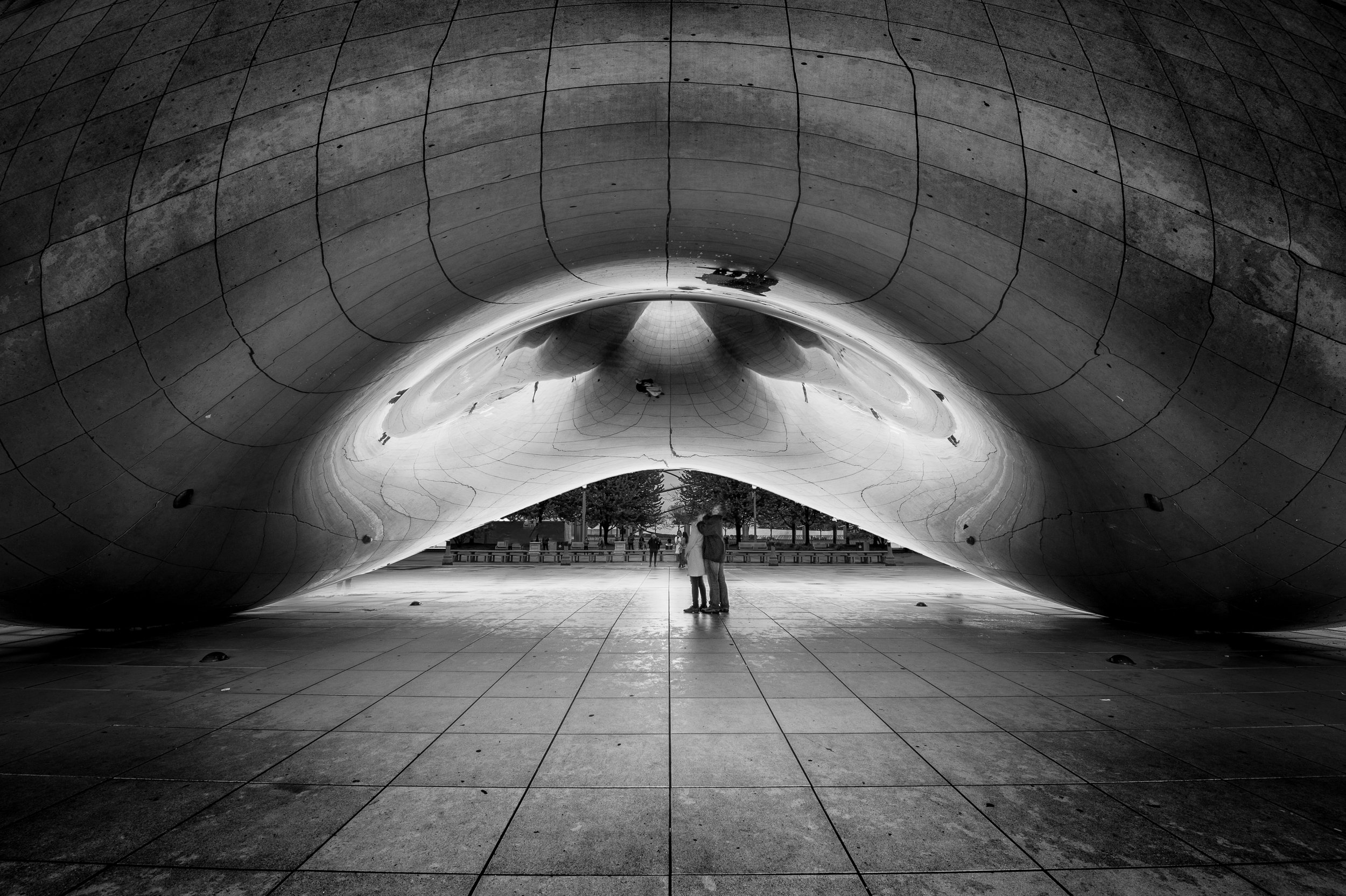Most night photographers struggle with the most basic requirement to make long exposures: an intervalometer. I believe I’ve found the solution: the Phottix Aion.
The Phottix Aion.
What is an intervalometer?
The object of my study (some call it an obsession) is a tool called an intervalometer, which is essentially an external cable release on steroids.
Example of a simple external shutter release.
A standard external cable release is simply a switch. Press the button, the shutter opens. Let go, it closes. Sometimes it has a lock that can hold that button down.
What an external cable release cannot do is execute timed intervals between exposures. This, along with programming shutter speeds, is necessary for goals such as star-trail stacking and time-lapses. For whatever the purpose, an intervalometer can make multiple programmed exposures.
Note: Some cameras now include this as a firmware feature. Hooray for progress! If yours does, then you may not need an external intervalometer. But before deciding, test it out. Many internal intervalometers can be confounding to configure, and most can’t overcome the camera’s native maximum shutter speed, which for most cameras is way too short for long exposures.
The Problems I Have With Intervalometers
So why do I care about this hard-to-pronounce camera accessory? It affects me when it does not work as expected. And it affects all our workshop attendees in the same manner. And it affects all night photographers in general. Here is a list of common issues:
The Cable Connection Breaks
This applies only to wired intervalometers, which is what most people own. Where the camera cable meets the body of the intervalometer, there is a “stress relief” molded into the cable. Despite that, all the rigors this connection goes through—bending back and forth during normal use, living all wrapped up in a backpack or bag, hanging off a camera or tripod—will eventually break the solder inside.
Then when we are inevitably someplace remote and interesting, suddenly the intervalometer stops firing the camera, and we start trying to hold the cable at just the right angle to reseal the connection and make it work. Which is does … sometimes.
Vello dedicated wired Shutterboss for Nikon DC2 connection.
The Cable Connection is For Only One Camera
Again, this applies only to wired intervalometers. You are locked into the cable that works with your camera. Which is good—unless you switch systems, upgrade to a new model or rent a different body.
I understand this makes it easier for manufacturers to sell to people looking for something specific, to not waste resources and to give people only what they need. But not all manufacturers make it easy to order a replacement cable or a different cable.
The Backlight Lasts Only 10 Seconds
This is exactly one second less than it takes to make an adjustment. Just kidding. But seriously, the light should last longer. Ten seconds is hardly ever long enough to adjust a programmed setting, and never long enough to create one.
The Status Indicator Light Ruins Photographs
The little red light blinks to tell you an exposure or sequence is running, which is a nice gesture. But if the cable twists forward to where your lens is pointing, you can ruin your image and others’ around you. Yes, that little LED can shed enough light to be picked up on a long exposure.
There Can be Too Many Modes
This is particularly true of wireless intervalometers. Many that I’ve used default to a mode that has nothing to do with night photography. Right?! How dare they pander to daytime photography. Geesh.
Joking aside, you may have to cycle through modes to get to the classic “intervalometer mode” we require for night photography. Every … time … you … turn … it … on.
I do not Want to Use My Phone
There are some very interesting exposure controllers out there that require your phone’s computing power to perform programmed exposures or sequences. I have tried many, and none are for me. I want to be “present” during my night photography experience, I want to preserve my night vision, and I want to save my phone battery.
The Phottix Aion transmitter (left) and receiver.
So What is the Best Option?
After much testing and firsthand experience with many, many manufacturers’ intervalometers—both in my own photography and by playing with what people bring to workshops—I affirm that the Phottix Aion is the best intervalometer you can buy. Here’s what I love about it:
You Can Set Exposure Durations in Tenths of Seconds
This matters when you are using the NPF Rule to determine star-point exposures, which can be very precise. Let’s say your NPF exposure is 11.72 seconds. With a standard intervalometer, you would have to round down to 11 seconds. Seven-tenths of a second doesn’t sound like much, but in this case it’s nearly 10 percent of the exposure. With the Aion, you can open the shutter for 11.7 seconds.
NPF exposures (seen here in PhotoPills) are almost always precise into the tenths (and hundredths) of seconds.
It Comes with all The cables for Nikon, Canon and Sony
Well, not all the cables, but if you have a camera that uses one of these connections, you are covered:
Canon 2.5mm sub-mini
Canon 3-pin
Nikon 10-pin
Nikon DC-2
Sony Multi-Terminal
(Sorry, Fuji, Pentax and Olympus owners.)
The Aion connectors.
It Remembers Its Mode
If you turn the Aion off and on, it will return to the last mode you used. Yay for efficiency and time management!
The Crosspad Buttons are Separated
One of the most frustrating things to watch is when someone new to night photography is trying to make an adjustment to the exposure or interval settings on a traditional intervalometer. A big part of the issue is that due to the control button’s one-piece construction, the difference between side-to-side and top-to-bottom adjustments is so minute that photographers easily change to the next setting instead of changing the value. Heck, it happens to me too. And I hate it.
The Aion fixed that—thank you! It features four separate buttons for up, down, right and left.
Most intervalometers have one main “arrows” button to press multiple directions; the Aion has the improved feature of four different arrow buttons, so you always know what direction you’re pressing.
You Can Use it Wirelessly or Wired
This is not a new feature to wireless intervalometers. But I still enjoy it.
Here are some examples of when it’s ideal to have a wireless trigger that is also an intervalometer:
Group shots that you’re in. (I’m sitting in the middle. Hi!)
Creative portraits that require many tries to execute.
Light painting far from the camera with short exposures.
The Countdown Time Shows Quantity of Exposures Remaining
This is not very important, but is good to understand. The Vello Shutterboss shows the exposure number you are currently on. The Phottix Aion shows how many remain. I prefer the latter. It lets me know not how much work is done, but rather how much work is left to go.
You Can Disconnect the Pieces
The issue with stressing the connection by continually wrapping up the cable and eventually breaking it is completely avoided. How? With the Aion, you can disconnect the cable when stowing the units. That alone will guarantee many more nights of photographing under the stars.
The cable plug pulls out, eliminating the biggest stress point of traditional intervalometers.
Selfies are Easier
Since you have a wireless transmitter with on-screen countdowns, making self-portraits under the stars, or including yourself as a human element in the scene, is easy. Doing so wirelessly is also safer than running back and forth to and from the camera in darkness.
Half-Press for Focus
The large button is for normal “Bulb” exposures: Press and hold to open the shutter then release to close it. But the button also has a two-stage functionality similar to the shutter release on your camera. You can half-press the button to autofocus. Combined with the wireless capability, you could focus on yourself in the scene!
What Could be Better
As much as I love the Aion, I’d love to see a few improvements in the next model. A few things I can nitpick:
It doesn’t include batteries. Four AAAs are inexpensive and easy to source. Not all wireless receivers use standard batteries.
The Mode button is where the backlight button is on other intervalometers. I am still re-training my fingers to find the backlight button without having to look for it, or to return to the “delay” or top-most mode.
The crosspad buttons are smaller than traditional intervalometers. And the keys are slick and rounded. (But the separated buttons are still better than the single crosspad button of other intervalometers.)
Video
If you’re more of a watch-what-I-mean kind of person, please enjoy this video comparison:
(And don’t forget to subscribe to our YouTube channel!)
Wrapping Up
The Phottix Aion is a big improvement over our previous intervalometer of choice, the Vello Shutterboss II.
Yes, the Aion costs nearly twice as much (actually on par with the Vello Wireless Shutterboss). So you can choose to carry two wired Shutterboss units for the same money, or one Aion that is likely to be more reliable.
Sadly, this is not the perfect solution. That still does not exist. I am not saying this to throw shade on any manufacturers. Night photography, despite its popularity, is still a niche. And perhaps the opportunity to make the right tool is too small for many manufacturers.
(If you are a manufacturer reading this post and want to collaborate with NPAN to make the ideal intervalometer, we are ready. In fact, we have begun the long-term process of defining the ideal solution. Ping us to start the conversation.)
For all of you night photographers out there, we hope this helps you make better star-point stacks, star trails, time-lapses, portraits, and whatever genius and creative ideas you realize with your cameras.
Let us know what you think in the comments or on our Facebook page, especially if you own or an Aion.










